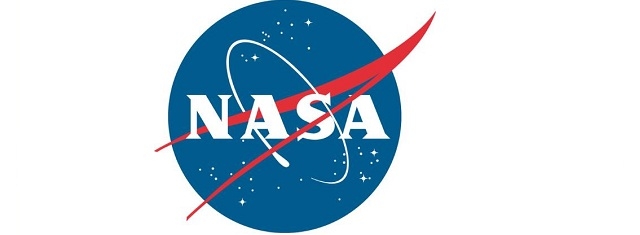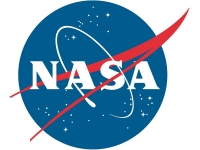Technology
NASA Awards $43.5 Million to US SMALL BUSINESSES For TECHNOLOGY RESEARCH
304 Proposals From U S Small Businesses

(Source: NASA)
USPA NEWS -
NASA has selected 304 Proposals from U.S. Small Businesses to advance Research and Technology in Phase I of its 2018 Small Business Innovation Research (SBIR) Program and 44 Proposals for the Small Business Technology Transfer (STTR) Program, totaling $43.5 million in Awards. These Selections support NASA's Future Space Exploration Missions, while also benefiting the U.S. Economy.
NASA has selected 304 Proposals from U.S. Small Businesses to advance Research and Technology in Phase I of its 2018 Small Business Innovation Research (SBIR) Program and 44 Proposals for the Small Business Technology Transfer (STTR) Program, totaling $43.5 million in Awards. These Selections support NASA's Future Space Exploration Missions, while also benefiting the U.S. Economy.
Proposals were selected according to their Technical Merit and Feasibility, in addition to the Experience, Qualifications and Facilities of the Submitting Organization. Additional Criteria included Effectiveness of the Work Plan and Commercial Potential.
Proposals were selected according to their Technical Merit and Feasibility, in addition to the Experience, Qualifications and Facilities of the Submitting Organization. Additional Criteria included Effectiveness of the Work Plan and Commercial Potential.
The Selected Proposals will support the Development of Technologies in the Areas of Aeronautics, Human Space Exploration and Operations, Science, and Space Technology. Awards cover a Breadth of Research and Development Needs, including :
* Superconducting Technology for High-Power Density Motors for Aircraft Propulsion that are Highly Efficient and Lightweight. The Proposed Propulsion Motors can be used for Ships, Energy Storage Devices and Wind Power Generators.
* A Room Temperature Electrolyzer for Generation of Oxygen from Carbon Dioxide on Mars that can also be used for improving Oxygen Recovery on the International Space Station, other Crewed Spacecraft, or for Energy Storage Devices.
* A Compact High-Efficiency (more than 97 Percent), High-Power Density Hall-Effect Thruster Power Processing Unit that can be used for Interplanetary Transfers, supporting Exploration and Science Missions.
* Superconducting Technology for High-Power Density Motors for Aircraft Propulsion that are Highly Efficient and Lightweight. The Proposed Propulsion Motors can be used for Ships, Energy Storage Devices and Wind Power Generators.
* A Room Temperature Electrolyzer for Generation of Oxygen from Carbon Dioxide on Mars that can also be used for improving Oxygen Recovery on the International Space Station, other Crewed Spacecraft, or for Energy Storage Devices.
* A Compact High-Efficiency (more than 97 Percent), High-Power Density Hall-Effect Thruster Power Processing Unit that can be used for Interplanetary Transfers, supporting Exploration and Science Missions.
* An Oscillating Heat Pipe -- a Passive Heat Transfer Device, to improve a Spacecraft's Thermal Control System. Other Applications include Terrestrial Vehicles with Electrical Loads and in Large Industrial Vehicles where the Proposed Passive Solution can replace Actively Pumped Single-Phase Radiators with Air Cooled Systems.
* Onboard Autonomous Intelligent Systems to manage Future Crewed and Uncrewed Spacecraft. Other Applications include Electric Aircraft, Chemical Processing Plants and Power Plants.
The SBIR Phase I contracts last for Six Months and STTR Phase I contracts last for 13 Months, both with a Maximum Funding of $125,000.
Phase I work and results provide a Sound Basis for the Continued Development, Demonstration and Delivery of the Proposed Innovation in Phase II and Follow-On Efforts. Phase III is the Commercialization of Innovative Technologies, Products and Services resulting from either a Phase I or Phase II Contract.
* Onboard Autonomous Intelligent Systems to manage Future Crewed and Uncrewed Spacecraft. Other Applications include Electric Aircraft, Chemical Processing Plants and Power Plants.
The SBIR Phase I contracts last for Six Months and STTR Phase I contracts last for 13 Months, both with a Maximum Funding of $125,000.
Phase I work and results provide a Sound Basis for the Continued Development, Demonstration and Delivery of the Proposed Innovation in Phase II and Follow-On Efforts. Phase III is the Commercialization of Innovative Technologies, Products and Services resulting from either a Phase I or Phase II Contract.
The SBIR and STTR Programs encourage Small Businesses and Research Institutions to develop Innovative Ideas that meet the Specific Research and Development Needs of the Federal Government. The Programs are intended to stimulate Technological Innovation in the Private Sector, increase the Commercial Application of Research Results, and encourage Participation of Socially and Economically Disadvantaged Persons and Women-Owned Small Businesses. Since the 1970s, Small Businesses have created approximately 55 Percent of all Jobs in the United States.
The SBIR and STTR Programs are managed for STMD by NASA's Ames Research Center in California's Silicon Valley. STMD is responsible for developing the Cross-Cutting, pioneering New Technologies and Capabilities needed by the Agency to achieve its Current and Future Missions.
Source : NASA
Ruby BIRD
http://www.portfolio.uspa24.com/
Yasmina BEDDOU
http://www.yasmina-beddou.uspa24.com/
The SBIR and STTR Programs are managed for STMD by NASA's Ames Research Center in California's Silicon Valley. STMD is responsible for developing the Cross-Cutting, pioneering New Technologies and Capabilities needed by the Agency to achieve its Current and Future Missions.
Source : NASA
Ruby BIRD
http://www.portfolio.uspa24.com/
Yasmina BEDDOU
http://www.yasmina-beddou.uspa24.com/
Ruby Bird Yasmina Beddou Nasa Small U S Businesses Technology Research Development Awards $43.5 Million 304 Proposals 2018
Liability for this article lies with the author, who also holds the copyright. Editorial content from USPA may be quoted on other websites as long as the quote comprises no more than 5% of the entire text, is marked as such and the source is named (via hyperlink).






